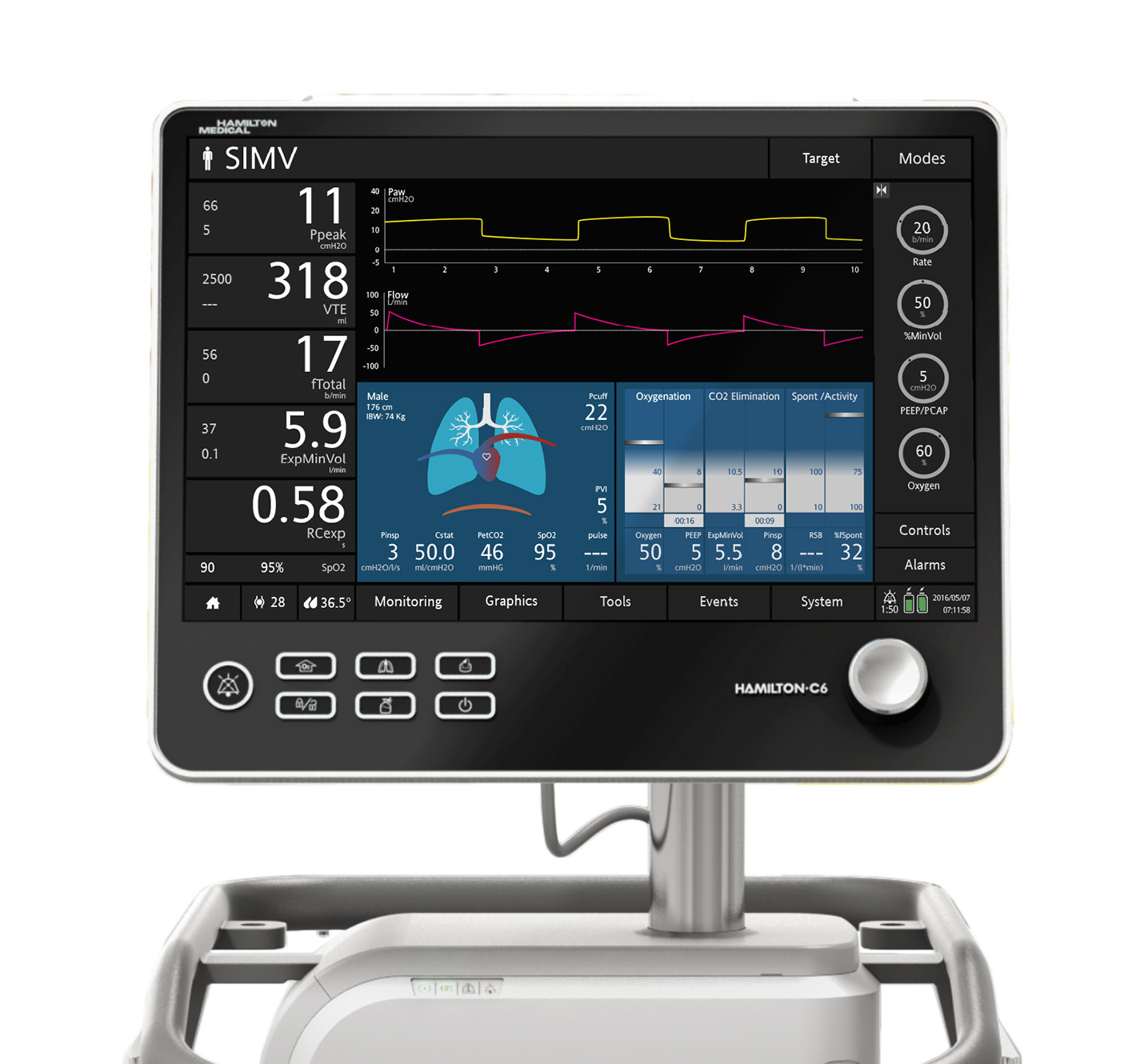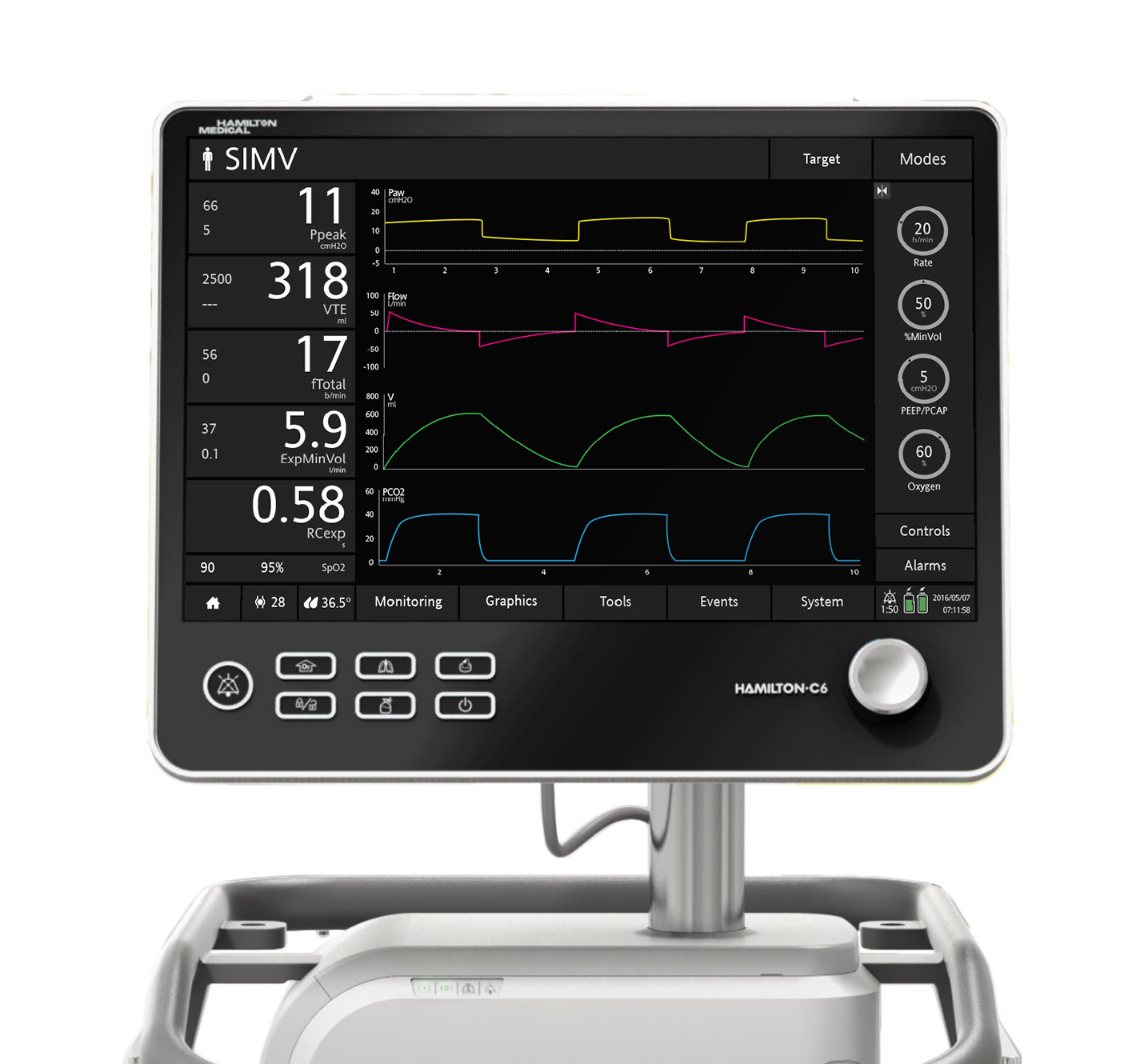Client
Studio Fifield per Hamilton Analitycs
Year
2015
Building a lives-saver machine.
Design the new interface of the Hamilton C6, a medical breathing-assistance machine, that got a new hardware with some new features including touch-screen, bigger monitor and Hi-resolution display.

How we
approached the problem
As UX/UI Designer I have taken care of the User Experience and the Interaction designed, led by a Senior Designer with over 30 years of experience.
First, we analyzed all the user journeys and the functionality of the previous model, trying to optimize most of them by taking advance from the new hardware features.
Then, we re-design the interface improving the data-visualization to make the most of the new screen resolution and dimension.
Testing in a real
environment
We then created a high-fidelity prototype using a 24″ monitor touch screen and an InVision Prototype.
The prototype was very hard to build; mainly because a lot of screens contained real-time charts about breathing and heartbeat real-time data, so half of the screen we upload was .gif instead of jpeg to make it as close as possible to reality.
(The prototype was made by more than 200 screens, we had to pre-load all the prototype and cached it before the test because using the wi-fi to download new screen could have impacted in user test).
We tested the prototype in the hospital using a script and list of tasks that doctors should have executed in order to validate user flows, the main functions of the machine, and, most importantly, succeed in each task without having any friction compared with the functions of the old model.
Then, with the help of doctors, we did some final tests in a real situation. This kind of test was not pre-built but was the result of the experience and daily use of the machine by doctors.
(i.e. We figured out we need to review the way we show errors or critical situations on the interface because in many cases, doctors and nurses should see them from the aisle while walking and giving a fast look to the monitor in the rooms.)
The whole design process was made collaborating close with the IT and Development Team of the producer of the machine checking the feasibility of each new function we designed.


I have learned how important is to test this kind of product in their final environments simulating real situations of usage.
This permits design not only for the product itself but to design solutions that cover different situations and different ways in which the product is used.
